Some Kerala countryside games for kids this summer vacation
There was a time when kids used to play a lot of local games in the courtyard and fields. Many of such games are long forgotten since they got introduced to computer and mobile games. Many such countryside games have already vanished. Let us bring those glorious days back. Through this column let me introduce you to a few such games played in villages of Kerala once.
Koovaa Koovaa – Police and Thief
This game is something like a play with a few characters playing their own roles. The different characters are King, Minister, Koova Koova, Thief, Policeman and the rest Soldiers. Just like a lucky draw, roles are written on different bits of paper and each participant has to choose one. The person who gets ‘Koova Koova’ shouts loud, “Koova Koova” and king among the group responses to his call by asking what happened.
Koova Koova should say that he lost his possessions and the mischief was done by a thief who stole everything, and also thief is hidden in the group. King orders policeman to catch the thief. If policeman manages to find that person who got ‘thief’ bit of paper he wins the game. Otherwise he loses, and the play continues.
Chatti Panth
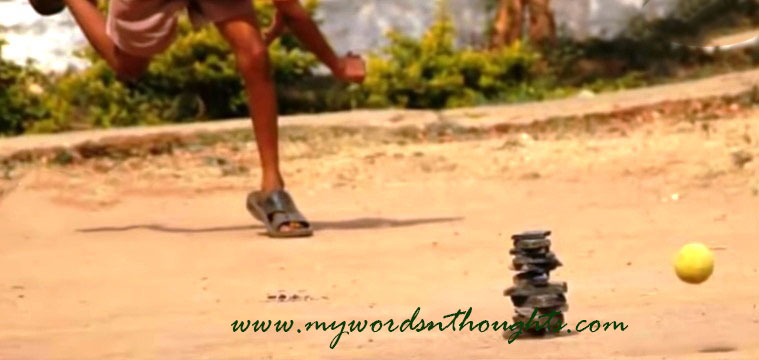
This local game is also known in the names – Chattikali and Dappa, and it’s played using 7 pieces of tiles. Participants are divided into two groups. Those 7 tiles are placed one above the other at a place, and from a particular distance each participant tries to fell the tiles using a ball. A person is given three chances at a time and if any member of the opponent team catches the ball, he is declared ‘out’. He can’t play later. Just like cricket, another member from the team continues the game.
If any player manages to fell the tiles, the duty of other members of his group is to place those tiles back in the same position. At the same time they need to escape from the ball throws by the opponent team. Otherwise he will be declared out. If the team manages to restore those 7 tiles as piles before they get ball throw, the team wins; otherwise it losses.
Keechi Keechi
Two players are minimum required to play this interesting game. Make a lengthy heap of sand or soil. It should have enough surface area to hide a small object somewhere. You can use a small stone, shell or anything that firmly stays inside your fist. Now place that object in your hand and penetrate through the soil. From the other end penetrate your hand inside the heap too. Now the player’s duty is to gently move both hands beneath the heap and hide the object somewhere. He should also say “Keechi Keechi” during this process.
After he safely puts the object somewhere inside the soil, now it’s the duty of other players to find its exact location. He makes wide guesses and gently places both his hands together at a place where he feels he can find the object. If he is right he wins the game and also gets opportunity to play the next round. Otherwise the other person wins.
Kothakallu
This game is mostly played by girls, and minimum two players are required. Choose 5 or 7 pebbles or stones of good shape and spread on the ground. Randomly pick one of them and toss it. Before it lands, the player should pick another stone from the ground without touching any other, and she should also catch the tossed stone before it lands to ground. If she manages to do both simultaneously she wins, otherwise she losses.
Through regular practice you can become an expert in this game and as the player swiftly takes a stone from ground this game is known as Kothakallu. She also sings a song in rhythm while playing, “Kothu, Koyikothu, Kothaladaykka, Vechaladuppam, Vaari pidutham, Thapp Thaalam Melam…….”.
Kuzhithappi
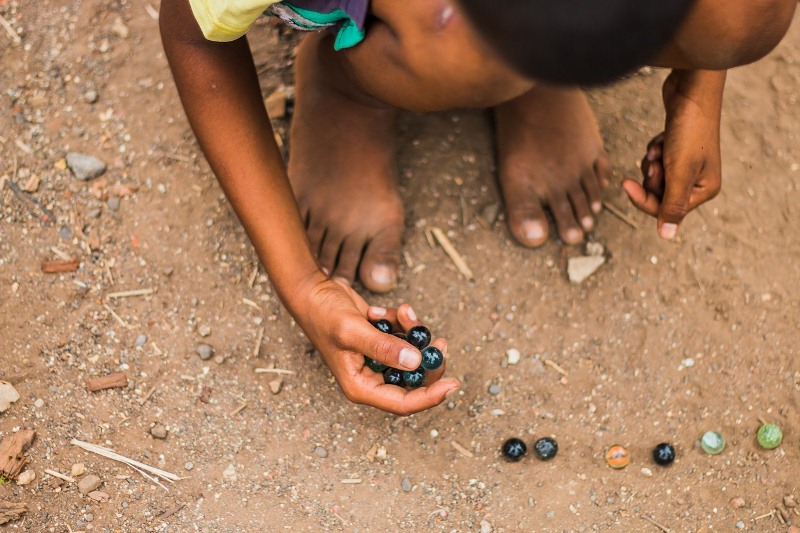
Minimum two players are required, and any number of participants can be added. Three small pits are made in a straight line at equal distance between. The length should be approximately 50 or 60 cms. Fix your thump in ground and place a ‘goli’ (goti) in the index finger or middle finger. Then he should kick each goli from one pit to another. If he manages to put goli in each pit, he wins the game and also gets 1-10 points. In between he should play smartly and kick other players’ goli away from the pits so that they don’t get points or find it difficult to get a few. The person who reaches 10 points first wins the game. It’s also called Goti Kali and Goli Kali.
Nooram Kol or Noottaam Kolli
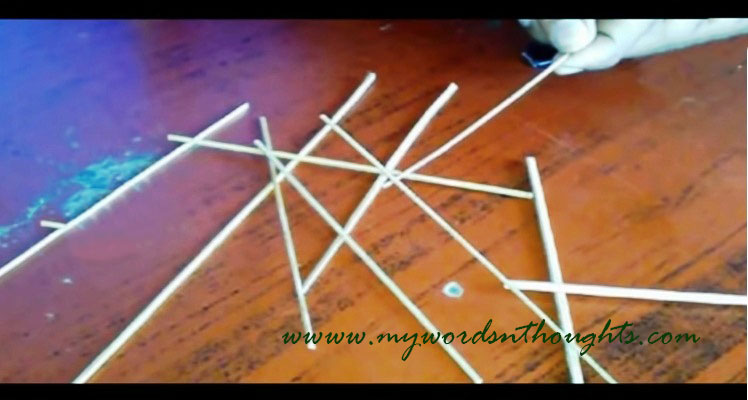
This interesting game is also called ‘Thallayum Pillayum’ in certain places and there may be a few changes too. Two or more players can play this game and a few coconut leaf midribs (Eerkkil in Malayalam) are only required to play. All players should sit on the ground, and midribs of three measurements are required – 10 with 4-inch length, 2 with 6-inch length and 1 with 10-inch length or above. Smallest ones have 10 points each, 6-inch sticks with 50 and the biggest one has 100 points.
Assemble all coconut leaf midribs together and divide them into two approximately equal parts. Make a cross and throw on ground. All of them will shatter on the ground. While a few overlap, a few may be isolated. At least one short midrib should fall on the top of any of the lengthy ones. Otherwise he will be declared out, and next player continues.
The player should pick each stick from ground without moving other ones. For this purpose he can use a single stick which he picks from the ground. He owns those sticks which he picks from ground and scores that much too. He keeps adding his score. While picking a stick from the shattered group, if anyone of them moves, the player is declared out. An expert player can score a maximum of 300 points. The person who scores highest gets the first turn in next round.
Kakk Kali (Vattu Kali)
This game was quite common in countryside across India one or two decades back. Now also it’s seen in some places, and it’s a favourite game of girls. Draw a lengthy rectangle and divide into eight equal squares using horizontal and vertical lines. Thus the rectangle should have 2 columns and 4 rows. Any number of players can participate in this game, and each player carries a broken flat tile or a flat piece of a broken earthen pot which she uses throughout. This piece is locally called Kakk or Vatt, and hence the name.
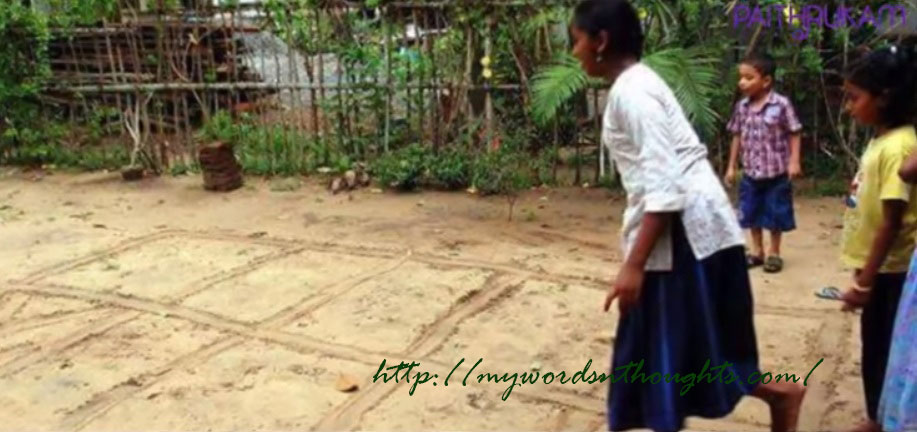
The player should stand outside the first column and start playing from column onwards. At first she should throw her Kakk in the first column and jump on it with one leg held up. She should never put her leg down till she travels each and every column and reaches back. While jumping her leg or any other body part should never touch the lines.
In certain places, Kakku Kali is played with some changes. For instance, when she reaches fourth column, she can put her leg down (this law is not applicable always). But in this case she may need to throw her Kakku outside the rectangle column, reach there in one leg and jump on it from first column. If she fails to do it or if her leg touches the line drawn, she is declared out. Also when she throws it, if it falls within the rectangular structure she is ‘out’.
After simply putting ‘Kakku’ in different columns from 1 to 4, she may need to put it on head, foot, in between toe and next finger and also on eyes and forehead too. Rules may differ in different places, and in all these cases, she needs to jump on ‘Kakku’ thrown outside the column. After that she is asked to jump each column with closed eyes and return to column one – one of the most difficult rounds, and if she successfully completes it, she turns around and throw her Kakku aiming at a particular column she chooses. The column where Kakku falls belongs to her and other players have to continue their play without touching this column, which is a very difficult task.
Naalu Moola
This favourite game is known in different names in different places. One such name is Kottukali. Usually two players play this game at a time. For that purpose a square is drawn on floor first, followed by 8 straight lines connecting corners passing through the centre. Thus the square has 8 parts. The players sit on either side of the figure. Each person has his own set of three stones to be placed at the joining points, and both sets should be easily differentiated.
You can put toss to know who plays first. Usually he places his stone at centre, which can be moved towards any direction. At first two persons place their stones at different intersecting points alternatively. Each person carefully places his stone so that he can block every attempt of the other player to place his three stones in a single straight line. Once each person places his three stones, they start moving their stones to next position, and their attempt is to place three stones in a single line. The person who succeeds in this attempt first wins. Also a player can block all the three stones of his opponent so that he can’t move anywhere. In this case too, he is declared the winner.
Arippo Thirippo
Any number of kids can participate in this game. All the players sit on floor in a circular position as a group and place both their hands on ground. A member of the group starts singing the song, “Arippo Thirippo Thorani Mangalam, Parippum Panthrandaneyum Kuthireyum Chekkitta Madakkitta, Pathinaamvallikkenthinpoo? Murikkin Poo”. He touches each hand while singing the song, and when the song ends with some hand, that person should remove the hand from the group.
He/she continue singing, “Murikki Cherikki Kidannole, Anjaayenna Kudichole, Akkarayulloru Maadapravinte Kayyo Kaalo Chethikothi Madangaatt”. When he pauses here, that corresponding hand should be removed. He resumes singing, “Daa..dee..dum..dum”, and when he stops here, that hand is also removed. The song is repeated till the last hand remains, and he is declared the winner. He also gets opportunity to sing the song and play it for the next round.
This game is played in many derivatives using different local songs. But the rule remains the same. In some cases, the person whose hands remain at end is declared as ‘loser’.
Games of old days don’t end here. If we go back to our childhood memories, many such games are nostalgic. Let us bring our kids closer to those old glorious days through such interesting games. Such games help them a lot to improve themselves as a good citizen, improves communication skills, and gives them relaxation and fun. At least for a while we can keep those ‘idiot boxes’ out of their sight!












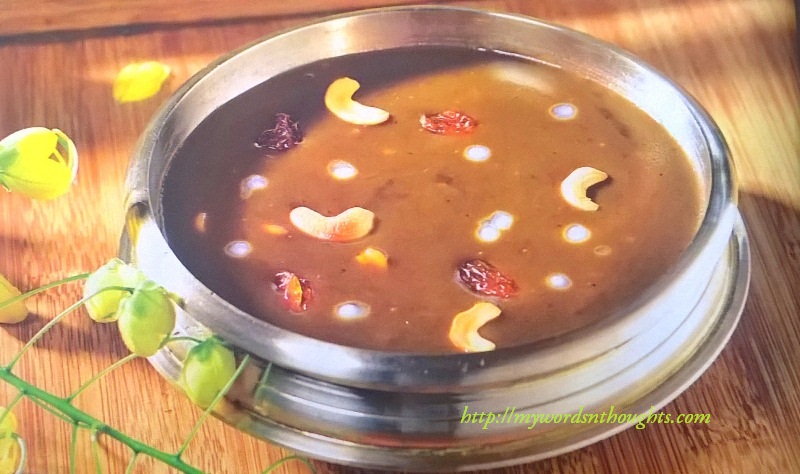

This is very useful